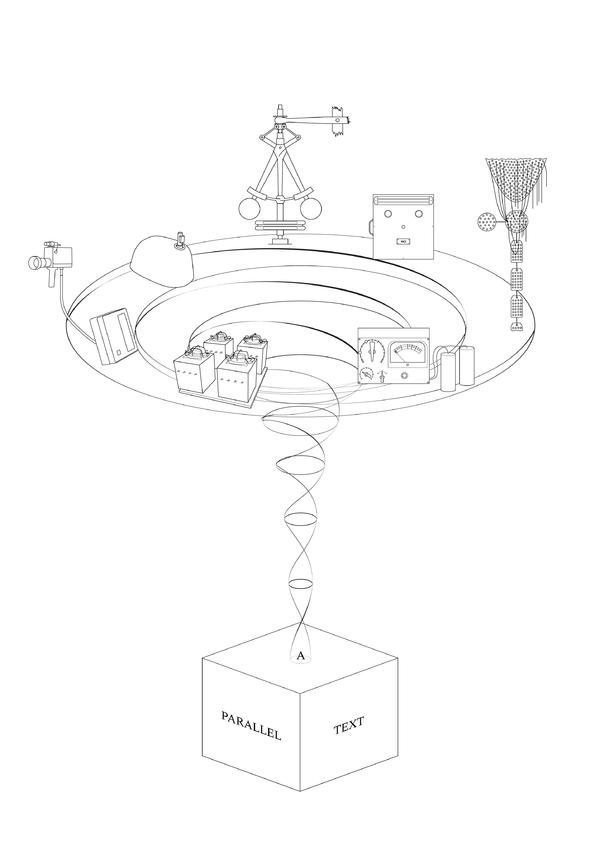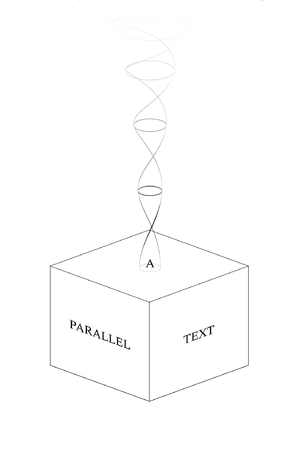Notes on Method

METHODOLOGY
The Fabulous Loop de Loop examines a discourse of cybernetics as it developed over a century. On reading these various texts, and sticking as closely as possible to the context which produced them, it becomes apparent that all the writers discussed here produce a different epistemological map to describe the territory they inhabit. It becomes apparent that, far from there being a stable narrative of how cybernetics came into being, we see a number of overlapping, entangled and conflicting claims, which in their articulation, produce this discourse.
It is a terrain in which the different protagonists look forward to different horizons and back to different paths of entry. The protagonists in The Fabulous Loop de Loop all adjust to the implications of an epistemological shift. They speak of its past and speculate on its future. They speak from different disciplines as engineers, philosophers, anthropologists, experimental psychologists, psychoanalysts, artists and writers. All of them attempt to accommodate the implications of a new conception of negative entropy, as the model of the regulation and conservation of energy (entropy) shifts to a model of the distribution of information (negative entropy).
To some the news comes as a revelation: Samuel Butler recognises the equivalence between mind and matter; Gregory Bateson develops a wholistic cybernetic meta-theory. To others it comes as a shock: Lacan recognises that the Freudian scheme of dynamic psychology needs to be rebuilt from its foundations; William Burroughs understands that literature is revealed as a code that can be scrambled and mixed with other media (that noise can constitute signal). All are dealing with the same set of premises and yet all describe a different reality. Here I stress the performativity of this discourse as it feeds information about itself into itself to allow adaptation.
This mention of "performativity" speaks to a contemporary discourse, which cybernetics helped to establish. In The Fabulous Loop de Loop I do not introduce contemporary commentary and analysis directly into the text, although my tools of interpretation in the Fabulous Loop de Loop are contemporary (I draw on the theoretical models used by Katherine N. Hayles, Lydia H. Liu, John Johnston and Friedrich A. Kittler, for instance) the Fabulous Loop de Loop does not give explicit reference to them (although they are always appropriately cited). I have put space aside in A Parallel Text for this.
A Parallel Text is one stage of abstraction removed from The Fabulous Loop de Loop. It extends the discourse into the contemporary realm. Here I take the opportunity to reflect on more recent analysis of the shifting terrain of this discourse.
I also take time to consider issues which are outside the range of The Fabulous Loop de Loop itself. These include: cybernetics as an instrument of political reason in the post WWII era and the influence of cybernetics on “post-modern/ post-structuralist” theory.
BIBLIOGRAPHY–FABULOUS LOOP DE LOOP
A PARALLEL TEXT
A Parallel Text runs throughout the The Fabulous Loop de Loop. Here I aim to situate the The Fabulous Loop de Loop within a broader historical and critical context. Parallel Text comprises a series of essays, annotations, extracts and notes. Links to A Parallel Text are provided in the margins of The Fabulous Loop de Loop.
CREDITS
Written by: Steve Rushton
Editorial design: Simon Browne and Steve Rushton
Machine Illustrations: Simon Browne
Text edits: Sol Archer
Wiki Support: Manetta Berends and Andre Castro
ACKNOWLEDGEMENTS
This project has its beginnings in the Signal:Noise events at The Showroom, London (2011-12). I extend heartfelt thanks for the inspiration and encouragement I received from Rod Dickinson, Emily Pethick and Marina Vishmidt, who through many hours of conversation helped me organise my scattered thoughts and locate where the pulse of cybernetics beats for me.
In the early stages I also recived invaluable support from David Reinfurt and Stuart Bertolotti-Bailey, who published a series of articles in Dot Dot Dot (2011) in which I developed the epistemological groundwork for this text.
Francis McKee also helped me develop my ideas further, his ability to find material connections which were previously opaque and his generosity as a reader helped this project get a little further off the ground.
This text began as a PhD project in 2011 and my thanks go to Yasco Horsman and Frans Willem Korsten for their extreme patience and useful feedback at a stage when less expert eyes would have found the text unreadable. They helped give form and direction to an inchoate ramble.
Many thanks to Aymeric Mansoux who suggested I host this project on the Xpub server.
The staff and students on the Piet Zwart Institute’s Lens-based and Xpub masters (Rotterdam) have informed the methods employed in making this wiki (the practices of collective annotation and notation, which we have developed over the years, the day-to-day use of the wiki as a platform for a writing practice, are knitted into the fabric of this text). Key to the development of this discourse have been Marloes de Valk and Natasha Soobramanien, my fellow writing tutors at the Piet Zwart Institute. My discussions with them have been inspiring.
Many thanks also to Kate Briggs for her generous and insightful feedback on sections of the text.
My correspondence and discussion with these people gives the lie to the claim that writing can ever be a solitary activity, particularly in a culture where technologies like Wikimedia and the etherpad compel cooperative thinking and notation ("codependent publishing"). I hope that this wiki will provide some basis for an ongoing discussion about the substance of the text and also about the potential of the wiki as a site for research cultures.
The first and last thanks go to Anke Bangma whose support has been intense and unfailing over the years it has taken me to put this text together.
